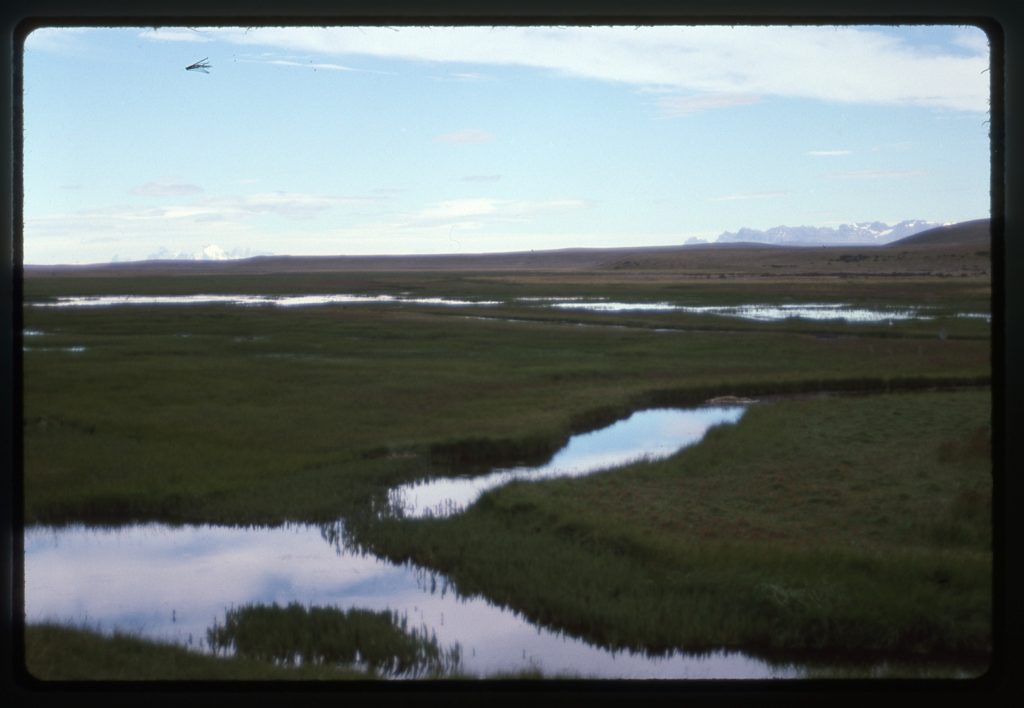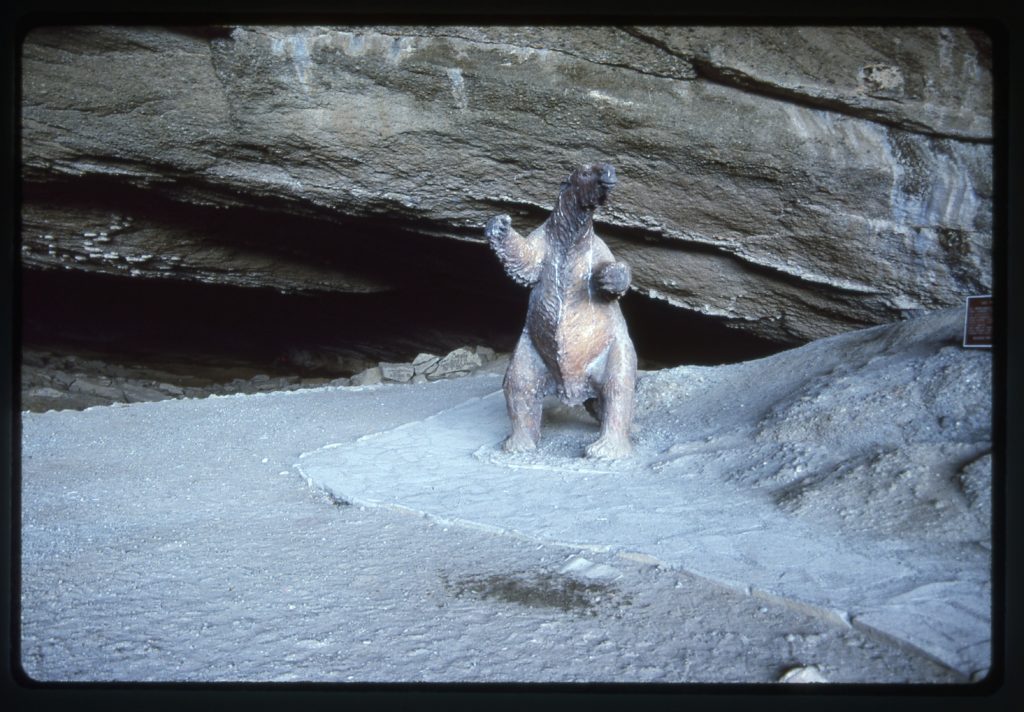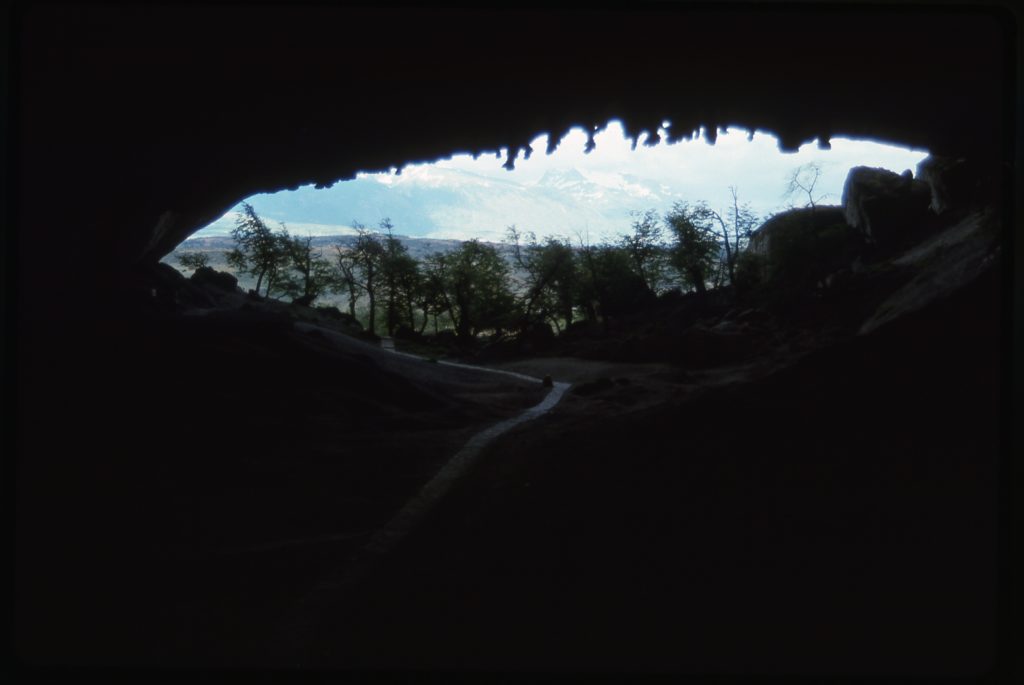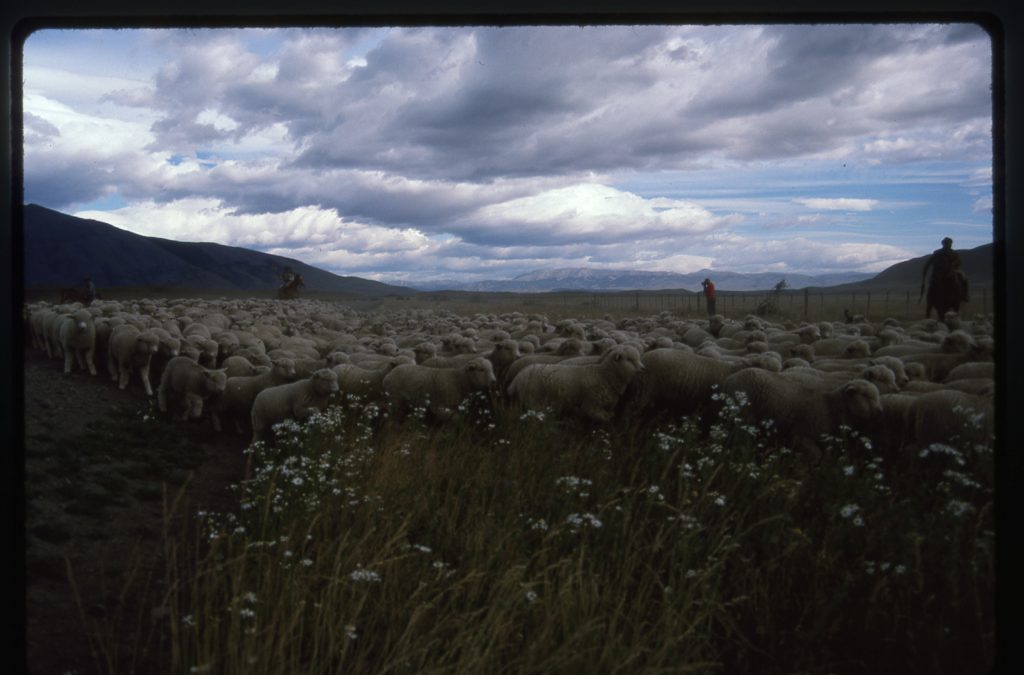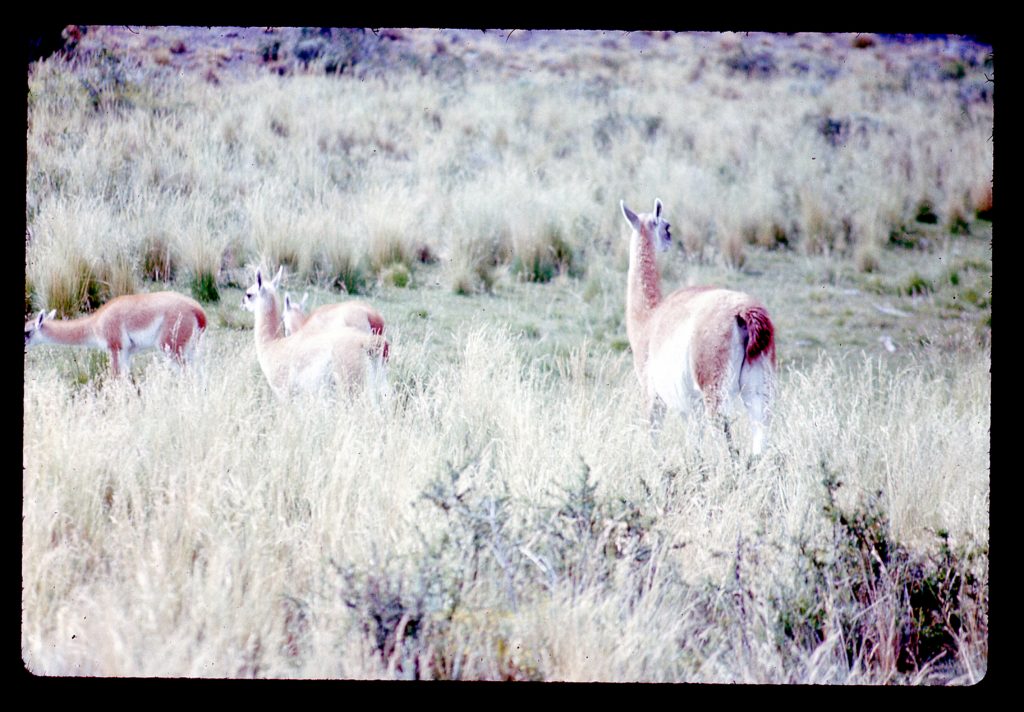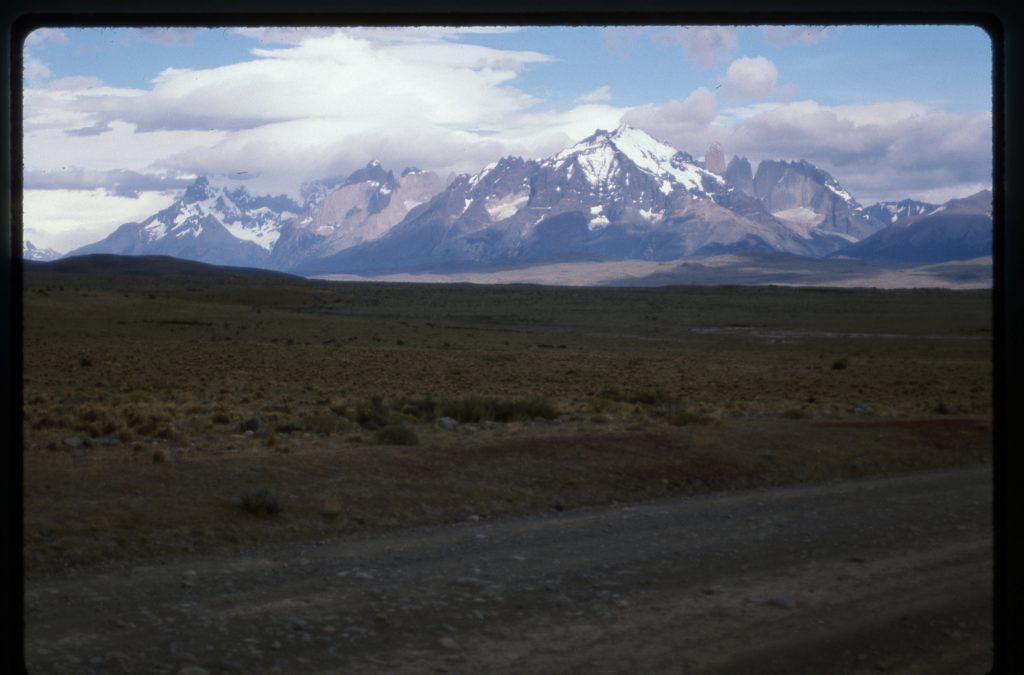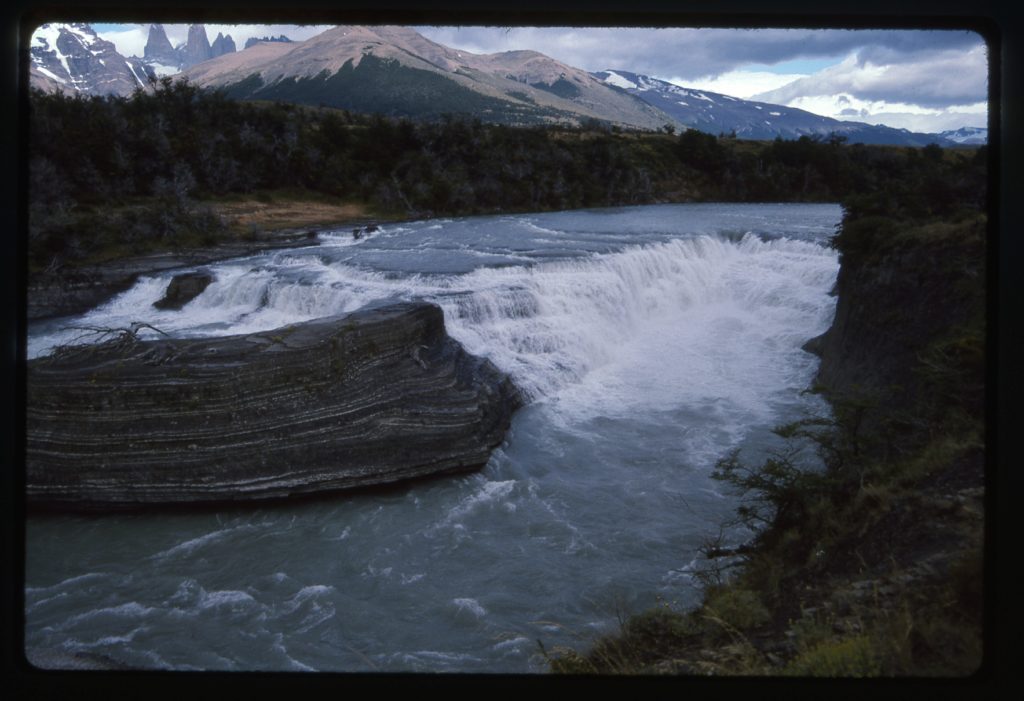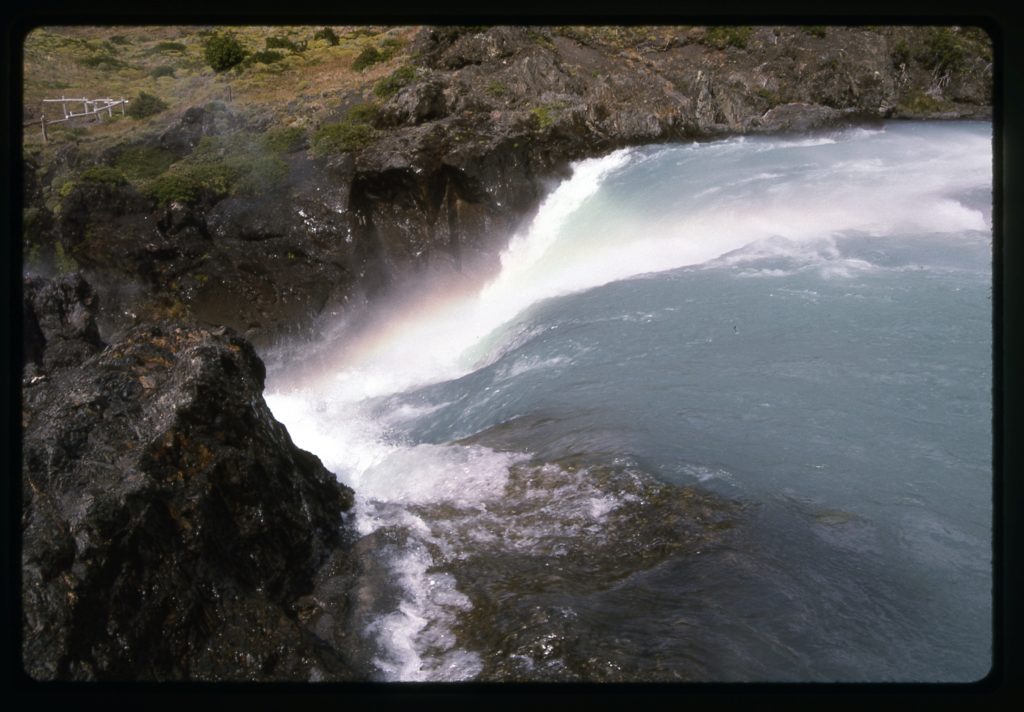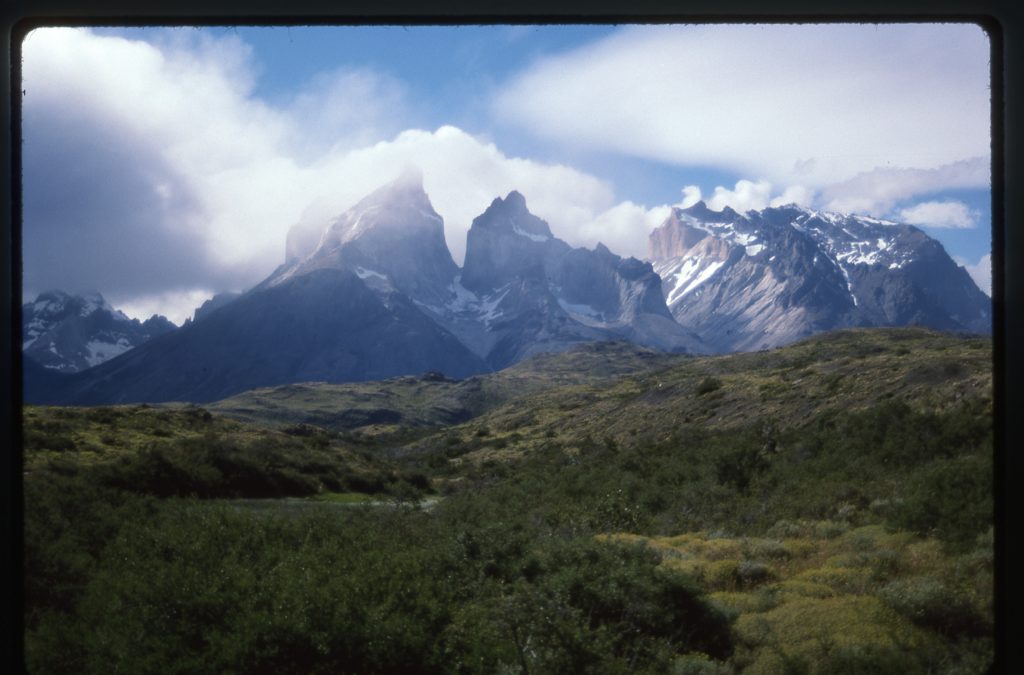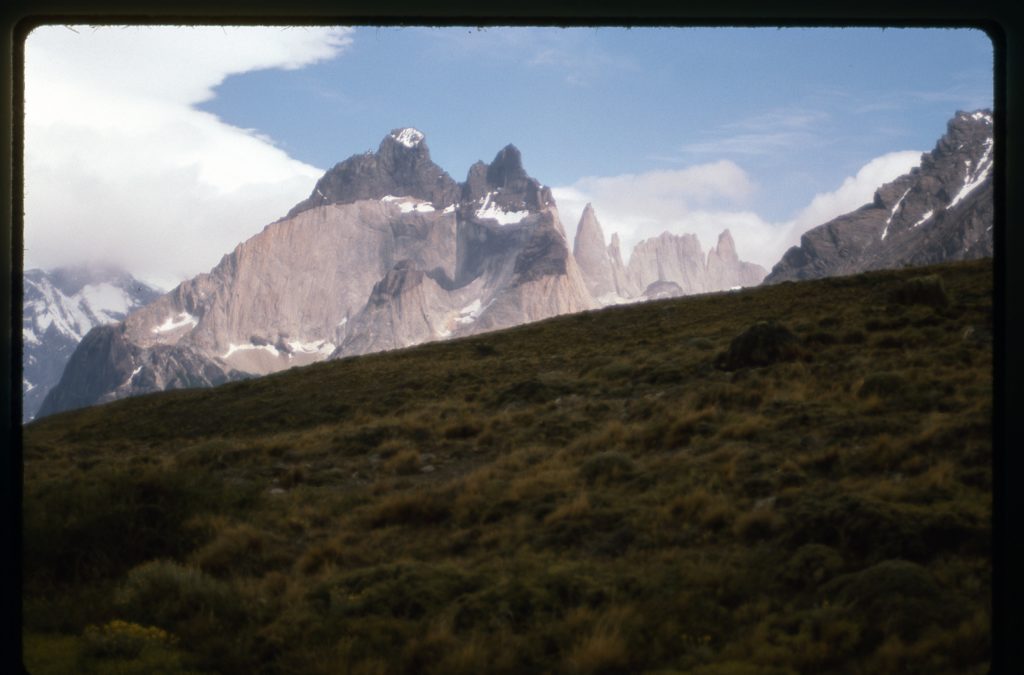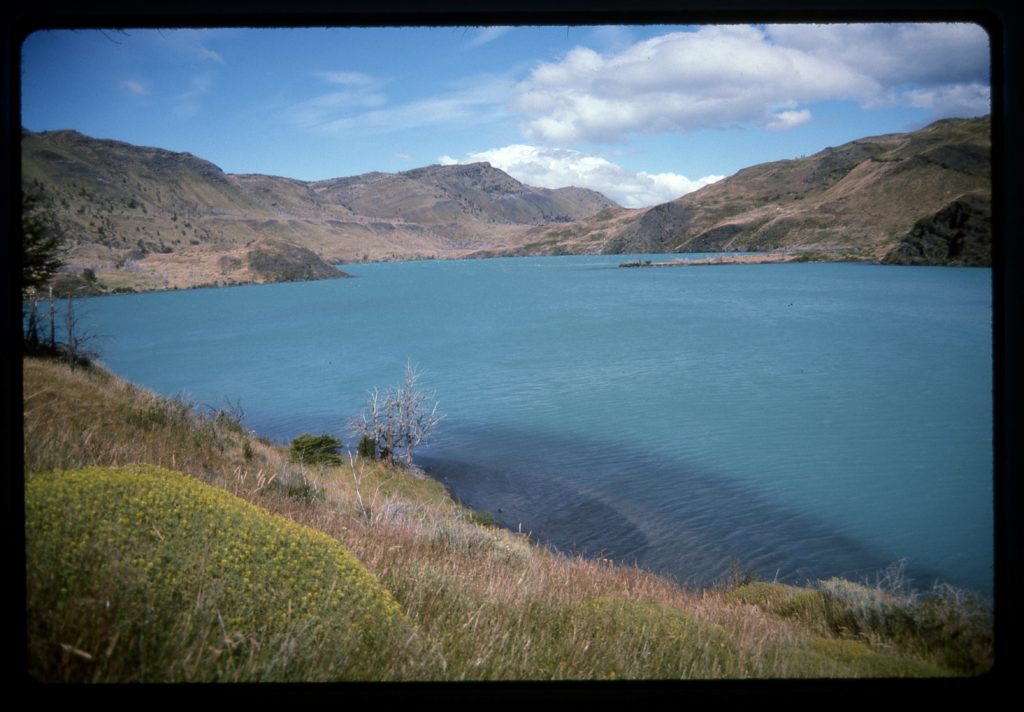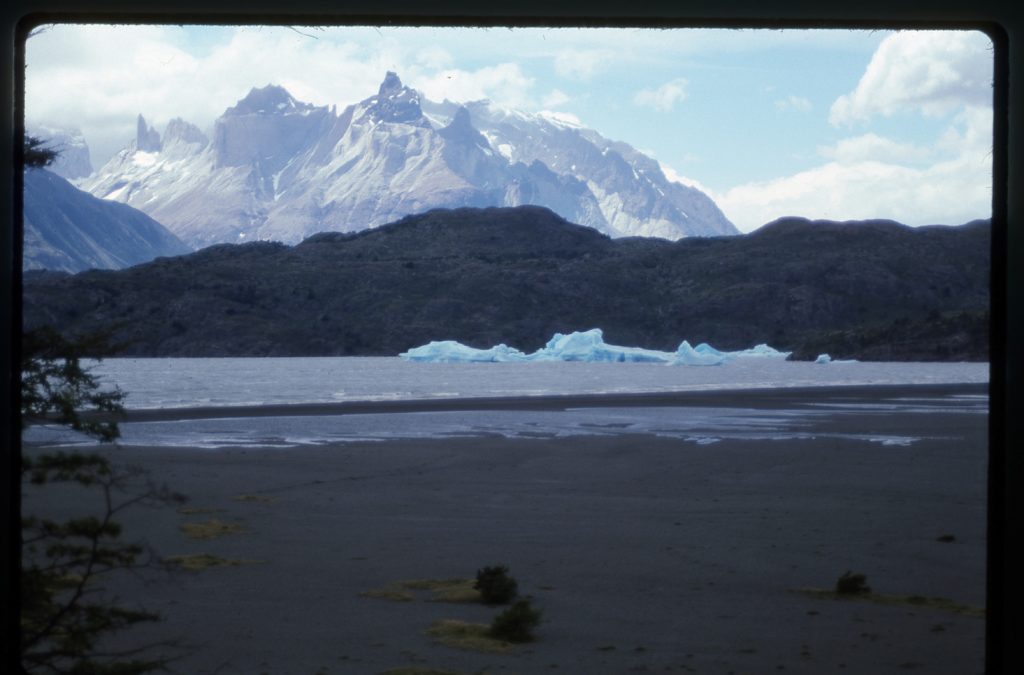Before you read this story, please be sure you’ve read the previous 12 chapters on this same web site.
Wednesday, January 23, 1991
Little did I know what a hell of a day this would turn out to be! I got up, stuffed everything into my backpack and walked down to the Pinguinos bus office. We pulled out at 7:00 AM in a nice bus and they soon put on another American B-movie. There were a couple of Aussies and a Dutchman on board and we talked non-stop for the 2-hour ride to a highway junction called La Esperanza. It was my time to get off the bus and transfer to another – the others continued on to Río Gallegos on the original bus on that overcast, gray day. Oh yes, did I tell you that the other bus I’d transfer to wouldn’t arrive for another 8 1/2 hours?
There was a café here, a kind of a truck-stop, but that was about it. I started thinking – was there some other way I could get out of here and continue on to Chile without waiting all day for the goddam bus? Hmmm, what if I tried hitch-hiking again? It had worked before, and even if it took a while, I bet I’d be better off than the endless wait for my bus. I scrounged a piece of cardboard from the café and started to make myself a hitchin’ sign. No felt marker here, all I had was a ballpoint pen, so it took a long time to make the letters big enough and dark enough to be of any use. I was almost finished my sign when up drives a nice new Mercedes diesel truck and parks. The driver comes in and I thought, nothing ventured, nothing gained, right? – I asked the driver, a young guy named Daniel, for a ride to Río Turbio on the Chilean border. Much to my delight, he said yes – maybe he wanted some company on the long drive. I sat him down and bought him breakfast right away and we talked about the trip. Also, I found another traveler and gave away my bus ticket – a win-win-win situation.
By the time we pulled out of there, it was around 10:30. The highway west was not paved, so we traveled only 30 mph – let me assure you that, at that speed, you don’t miss much. It was a relaxing trip, perhaps a little too relaxing, and seemed to take forever. It was huge, empty, lonely country – very haunting. During one 4-hour stretch, we didn’t see another vehicle. There were many marshy areas with birds nesting or with their chicks, and we saw plenty of rheas too. We passed a couple of estancias out in this vast land, but that was about the only sign of humanity. We could see mountains on the distant western horizon.
Finally, as we neared Río Turbio, we entered rolling hills running with clear streams, forested, with miles of daisies lining the roadside. Río Turbio is a coal-mining town, and completely unimpressive. This was the end of the line for Daniel, but not for me. I barely had time to thank him for his kindness because the moment he stopped, there was a bus waiting across the street – it turned out to be the one I needed to take to get me to the Chilean border. I grabbed my pack and piled in – man, it was jam-packed – I had to stand. I was glad to get out of Río Turbio – this drab, coal-mining town had nothing to offer.
Soon, we arrived at the border. What a hassle! We all had to stand in a line to get exit visas to leave Argentina. That done, we repeated the entire hassle to get through Chilean customs to enter their country. It seemed to take forever, but finally we were done and boarded a different bus in Chile. It was a downhill ride of several miles, dropping 2,000 vertical feet to arrive at the Chilean coastal town of Puerto Natales, population 18,000. You know, it felt really good to be here – Chile just felt better than Argentina for me at that moment. It didn’t hurt any that the town sat right on the shore of the Pacific Ocean.
The bus dropped me in the center of town, and I quickly found a room in a private home for the princely sum of $3.00 per night. Turns out I’m sharing the room with a fellow from Sweden – I had met him before, at the bus station in Mendoza – small world. The first thing I did was take a walk to a travel agency and buy a seat on an all-day bus tour to Torres del Paine for tomorrow, and it only cost $9.50, a smokin’ deal. I’d been thinking about how I was going to get back to Río Gallegos to pick up my excess gear – the idea of backtracking the way I’d just come was unappetizing. I decided to buy a bus ticket to Punta Arenas, Chile and another from there to Río Gallegos back in Argentina. There would only be a 2-hour wait between buses, and I’d see a lot of new country without any backtracking. It also had the advantage of being cheaper, as all the travel would be purchased in Chile.
Feeling pretty smug about how clever a traveler I’d become, I now set out to dine – I was ravenous. Several blocks away, I found a nice little restaurant and set myself down for supper. Chicken in orange sauce, salad, toasted bread with butter and a nice cold Chilean beer, all for $4.50 – yummy, and a good price. Back at my room, my Swedish room-mate announced that he’d dined at a hostería for only $1.50 – maybe not as fancy as my meal, but satisfying none-the-less. I love these Chilean prices.
A Canadian bloke in the next room told me he’d met 2 Israelis who had each paid $400.00 for passage on a ship to Antarctica. It was a Chilean naval vessel supplying the several research stations the country maintains along the Antarctic Peninsula. They’d spent a total of 8 days on shore – amazing – what I’d have given to have been in their place!!
Thursday, January 24, 1991
Yesterday had been a long day, and now here I was, my first day in a new country with some exciting travel ahead of me. I was up by 6:00 AM, and happy to learn that the $3.00 cost of my room included a spare breakfast of rolls, butter, jam and hot milky tea – enough to get the day started, for sure. The van arrived at the house by 7:30 to pick us up, and away we went. Out little company consisted of 3 American women, 2 Canadian men, 1 Swedish man, 1 Brazilian man and 1 French woman. It was a comfortable, roomy vehicle, so we could all relax and enjoy the day. The French woman spoke with me a lot in her native tongue – my family’s ancestry is French-Canadian, so she forced me to practice my rusty French – it’s amazing how much of a language you lose if you don’t use it regularly.
The main focus of our trip today was a visit to Torres del Paine National Park, the fulfillment of another dream I’d had since first discovering it in our family encyclopedia as a young boy. The park was originally established in 1959, but before that it was sheep-grazing country. More land was added in 1962, and in 1974 Estancia El Paine, a sheep-grazing property was also included. There’s some controversy as to the origin of the park’s name – some say it was named after a female climber named Paine, although a local Indian language claims the word “payne” meaning blue. Either way, it is a stunningly beautiful place. A Unesco Biosphere Reserve, it has been called by National Geographic Magazine one of the 5 most beautiful places on the planet. The park is not very large, think of an area about 30 miles by 30 miles, but it is an extremely popular place. In the short 2-3 month season of reasonable weather, about 150,000 visitors arrive, most of them foreigners, so the park is strictly managed. There’s an excellent system of trails and cabins to accommodate hikers. Technical climbers are drawn to the park’s namesake towers, the three granite peaks of the Paine Massif. By the way, Paine is pronounced “pie-nay”. It is a 70-mile drive from Puerto Natales to the park, nearly all of it paved, and the park lies entirely within Chile.
Our trip started from town and followed the ocean shore for a few miles, where we saw hundreds of black-necked swans. Then, turning inland, we passed through semi-wooded country. Perhaps 10 miles from town, our driver made a side trip to the Milodon Cave. In 1896, an explorer visited the cave and found bones belonging to a giant ground sloth. This creature was larger than a full-grown bull, and of a type only found in South America. There is a full-size model of the creature at the entrance.
We walked deep inside the cave, with no restrictions – it was low-roofed, but otherwise large, probably 300′ across.
There was no entry fee to pay, even though this was a national monument. After a short stay, we boarded and moved on, this time through more open country. Along the highway, we experienced a slight delay commonly found in Patagonia.
Once arrived at the park entrance, we each paid an entry fee of less than five dollars, then drove on. There were plenty of rheas, and a great many guanacos which seemed very used to people. Our driver stopped often so we could take photos of these gentle creatures, sometimes only 50 feet away, even with their numerous babies.They get up and down just like a camel (makes sense, right, as they are cameloids, after all), and they sure can run fast.
The park is also a good place to see Andean condors, and is known to support a population of pumas and the endangered South Andean deer. As we pushed deeper into the park, we got our first look at the Cordillera del Paine.
As our driving tour continued, we saw many beautiful lakes and waterfalls. Here’s one of them.
And here’s another.
Our van stopped at the Salto Grande so we could walk on a path down to the falls. What I remember even more than the power of the falls was the wind. I know it’s cliché to say it, but it was the strongest wind I’ve ever experienced, including all the high mountain storms in my career. The wind whipped huge sheets of water off the surface of the river, created waterspouts and even pushed large waves along the surface. As we walked along the path, a mighty gust of wind came out of nowhere and hurled a woman bodily against a tree, cutting up her back and blowing her eyeglasses away. We picked her up off the ground, but she was terrified and couldn’t wait to get back into the van. Clouds swirled around the summits, and the view changed by the minute. The power of the Patagonian wind had to be experienced to be believed.
And here’s the best view I had of the tallest of the towers.
There were quiet moments too, like this stretch of the Rio Paine.
Our driver made a stop at Lago Grey. This lake sits at a mere 200′ above sea level, and the large glacier at its north end calves icebergs directly into it. There are so many beautiful lakes, glaciers, valleys and peaks in the park that you could spend weeks just getting a cursory overview.
The afternoon wore on, and we finally had to start back. By the time the driver dropped me off at my rooming-house, we had been on the road a full 12 hours. I walked to a restaurant for supper, where I couldn’t resist a bottle of excellent Chilean wine – it was cheaper than buying bottled water. Later, when I walked back to my room, three sheets to the wind, I realized I’d been very fortunate to have visited some of the world’s great beauty spots in the last few days. I wonder what awaited me next.
Please stay tuned for the next installment of this story, Part 14.
Please visit our Facebook page at https://www.facebook.com/pages/Desert-Mountaineer/192730747542690

